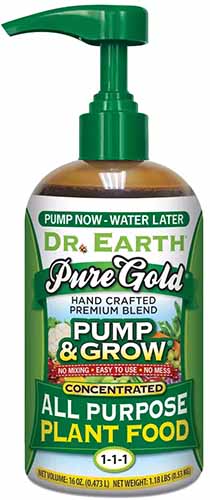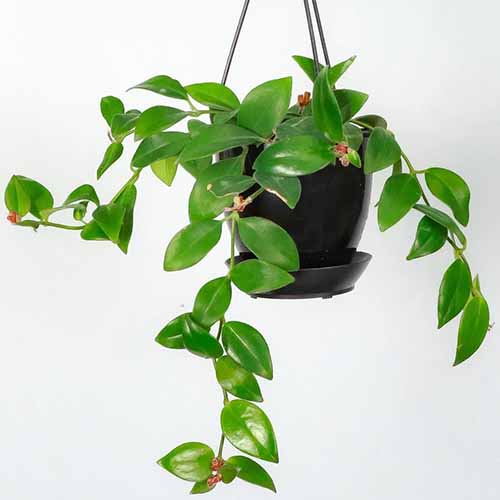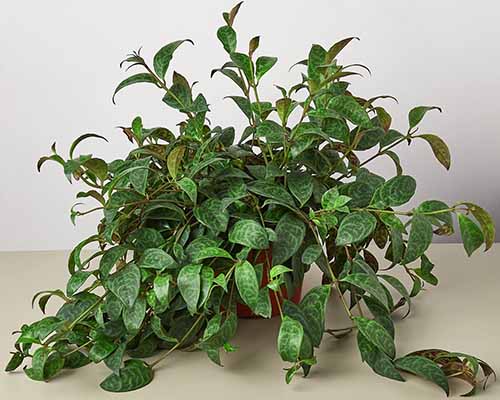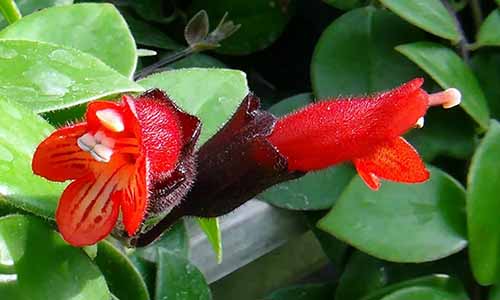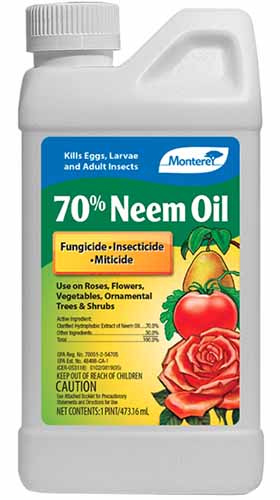
Aeschynanthus spp.
Whereas I like the deft brushstrokes and outlet for private expression concerned in making use of make-up, I actually don’t have the knack – and I’m too cautious to placed on the stuff.
However I’ve lastly discovered a lipstick I can respect: vegetation within the Aeschynanthus genus that earned the widespread identify “lipstick vine” because of their flowers, which appear to be lipstick rising from a tiny tube because the buds open up.
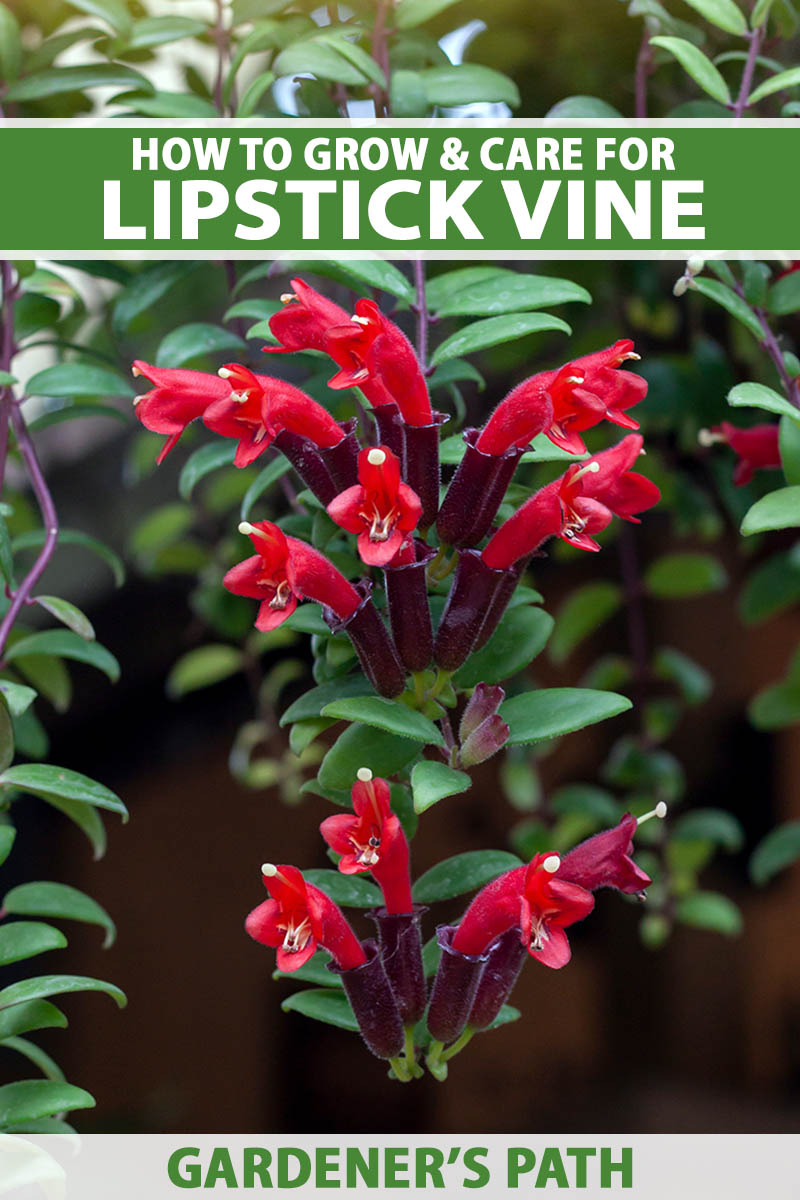
We hyperlink to distributors that will help you discover related merchandise. For those who purchase from considered one of our hyperlinks, we could earn a fee.
To me, their most particular attribute is that they are going to produce these clusters of pink or red-orange flowers indoors.
These showy vegetation originated in southern Asia, the place the epiphytic vines drape from tree branches in damp forests.
Once you develop Aeschynanthus species at house, it’s obligatory to duplicate the soil and rising circumstances of their native vary as intently as doable.
These evergreen perennials could also be cultivated open air year-round solely in USDA Hardiness Zones 10 to 11.
On this information, I’ll share tricks to develop and look after lipstick vine as an indoor plant, although you could select to deliver it open air for the nice and cozy months.
Right here’s every part I’ll cowl:
What Is Lipstick Vine?
There are 150 recognized species within the Aeschynanthus genus and all of them are epiphytes. These belong to the Gesneriaceae household, which additionally consists of African violets.
Species from this genus had been first categorised by botanist William Jack and so named a yr after his dying, in 1823.
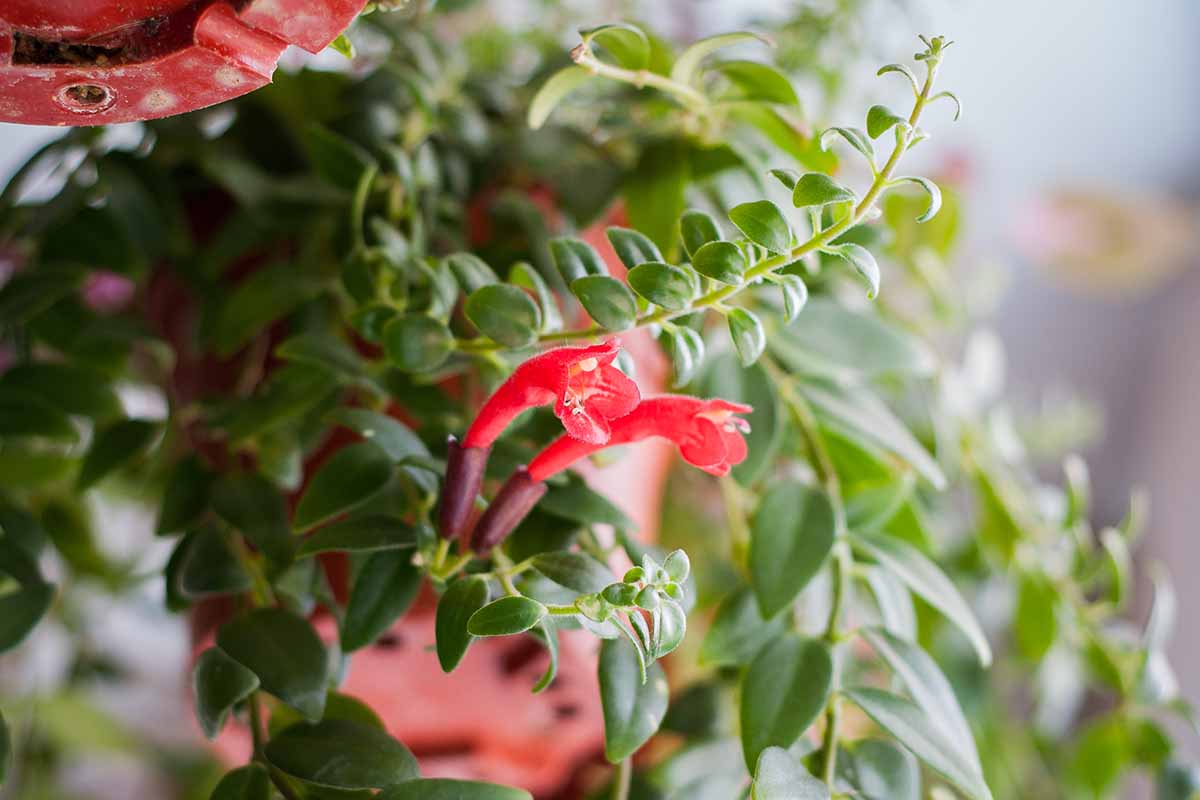
The genus identify is a mix of the Greek phrase “aischne,” which interprets to “disgrace” in English, and “anthos,” or flower.
Although the variety of completely different shades and kinds obtainable from these vegetation couldn’t presumably compete with the multitudes of lipstick choices lining the cabinets at your native pharmacy or division retailer, there are quite a few species and cultivars to select from nonetheless.
The most typical species in cultivation are A. radicans, A. longicaulis (syn. A. marmoratus) aka Black Pagoda, and A. fulgens (syn. A. evrardii), in addition to hybrids and various cultivars.
Heard sufficient to be intrigued? Let’s transfer on from dreaming about these wonderful blooming vines to rising them. Right here we go!
Lipstick Vine Propagation
It might be doable to propagate lipstick vegetation from seed, however this technique is unreliable, and cultivated varieties and hybrids won’t develop true to the dad or mum plant.
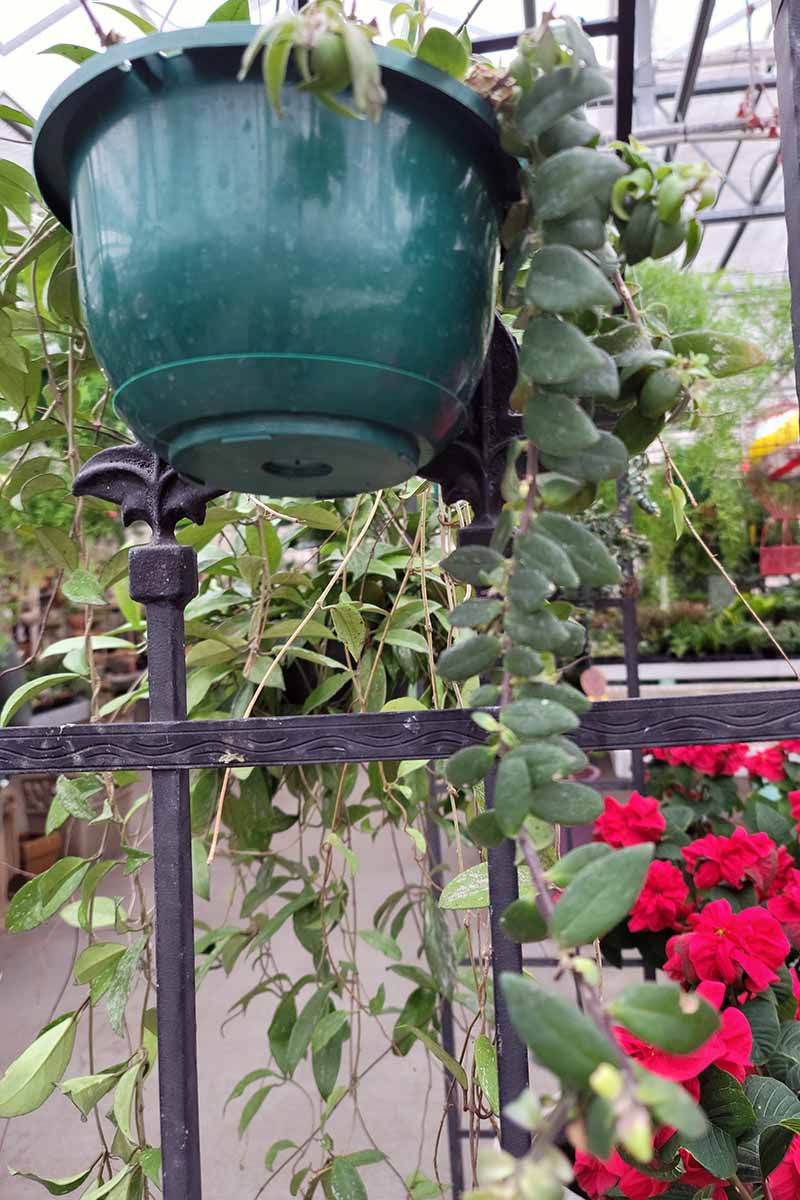
Lipstick vegetation will develop readily from cuttings, so in case you have a pal who’s already found the thrill of this flowering houseplant, you’re in luck.
There are two methods to root them:
In Water
These lengthy vines that the vegetation produce are glorious for rooting cuttings. The perfect time to take cuttings is within the spring and summer season.
To provoke the method, you possibly can reduce a four-inch piece from the top of a wholesome stem, just under a node.
Take away any flowers or buds, and pinch off the leaves from the underside three inches of the stem, leaving at the least two leaves on the high of the reducing.
Then place the reducing upright in a transparent three- or four-inch-tall glass stuffed about two-thirds of the best way with tepid water.
Make sure that all the cuttings are positioned with their leaves above the water line and at the least one naked node under the water. This node is the place the brand new roots will sprout.
Place the container in a location that’s at the least 65°F, or ideally nearer to 70°F always. It must also obtain a number of hours of shiny, oblique mild every day.
If the water turns into cloudy, fastidiously drain it and exchange it with recent, tepid water.
Change the water anyway each 4 or 5 days to attenuate the danger of dangerous bacterial and fungal progress. Additionally, take away any cuttings that get slimy or develop brown or lifeless leaves and toss them.
Search for roots beginning per week later, however be aware that the method could take a number of weeks.
Wait till the roots that type are at the least half an inch lengthy earlier than transferring every reducing to a two-inch pot full of an acceptable potting combine – which we’ll talk about under so preserve studying!
A number of may be planted collectively in bigger pots, however watch out to keep away from containers so massive that the overabundance of soil could depart vegetation topic to rot.
In Potting Combine
Rooting a reducing in soilless potting combine begins with snipping cuttings as described above and eradicating the underside leaves, ensuring every reducing has at the least one node.
Chances are you’ll need to dip the reduce finish in rooting hormone powder to hurry the method.
Subsequent, gently jab the cuttings into an African violet specialty system potting combine that you simply’ve pre-moistened and allowed to empty. The naked node needs to be positioned barely under the floor, with the leaves an inch or extra above it.
Since you possibly can’t count on a 100% success fee, I like to recommend inserting at the least 4 cuttings in pots 4 inches in diameter.
Once more, you don’t need there to be an excessive amount of vacant soil within the pot or the cuttings can simply succumb to overwatering and decay, identical to extra mature lipstick vegetation would possibly.
Place the pot in a spot with a temperature of 65 to 70°F and that receives at the least 4 hours of shiny, oblique mild every day.
Hold the combo moist by spraying the floor day by day or two with water from a twig bottle. If it’s not an excessive amount of hassle, you possibly can improve your odds of success by slipping the pot into a transparent plastic bag to enhance moisture retention and improve humidity.
Anticipate the cuttings to type substantial roots and be prepared for their very own particular person pots within the house of about eight weeks.
If any have clearly died as a substitute of rooting, be certain that to take away them promptly to cut back the specter of an infection for the remaining cuttings.
Transplanting
To verify a potted nursery begin is wholesome, verify for shiny inexperienced foliage with out leaf spots or indicators of insect injury.
Additionally, get a have a look at the drainage holes within the backside of the pot – don’t buy any which have slimy brown roots protruding since these point out lethal root rot.

Whether or not you’re transplanting a reducing you rooted your self or a bought begin, be sure you choose a correct rising combine.
You’re aiming for a moisture-retentive, well-draining medium, and utilizing a potting combine formulated particularly for African violets works properly.
My most popular model is Espoma. Their natural African violet potting combine is formulated with sphagnum moss, humus, perlite, limestone, and yucca extract.
Espoma African Violet Potting Combine
It’s obtainable in four-quart baggage through Amazon.
For extra recommendations on selecting the best soil for various houseplants, see our information.
Choose a container with care, too. Unglazed terra cotta pots are out as a result of they dry out too shortly for these vegetation that require constant moisture.
As a substitute, go for pots made from plastic, resin, and the like – one thing that retains moisture however is light-weight.
When you’ve discovered your pot, you’ll need to fill it about midway with moistened potting combine.
Ease the transplant from its container and place it so the crown will relaxation about an inch under the rim of the pot. If it’s younger, it most likely received’t have tangled roots; loosen them gently with clear fingers as wanted.
Add extra soil under the transplant if the soil stage isn’t excessive sufficient. Then fastidiously fill within the pot to an inch under the rim, flippantly firming the combo along with your fingers so the plant is steady.
As soon as your transplants are of their new pots, place them in the identical spot the place they had been rooting, or of their new house in case you are planting bought begins.
Hanging containers are an incredible thought for displaying lipstick vegetation. Generally the vines can exceed three toes lengthy, so that you’ll need a pot or basket that may look good hanging excessive on a wall or from the ceiling.
Indoors, these needs to be cachepots with out drainage holes so that they received’t drip in your carpet, with plastic nursery pots which have holes within the backside for drainage positioned inside.
This light-weight plastic wall planter sconce is a enjoyable possibility. In a half-moon form, it measures 12 inches throughout by six inches tall and huge and is available in seven colours, together with black, white, and espresso metallic.
It may be mounted by itself or grouped with others in a sample of your selecting to create a cascading show of lipstick vines indoors.
Every plant will have to be faraway from the sconce for watering, and changed when the liquid has drained out.
American Essence Topeka Wall Sconce Planter
The American Essence Topeka wall sconce planter is obtainable on-line from Eplanters.com.
Find out how to Develop Lipstick Vines
You may give your lipstick vegetation a powerful begin simply by inserting them in a hospitable location.

Observe by means of with correct and well timed watering and fertilizing, and a lot of the work is completed.
Listed here are the highest issues when rising a lipstick vine:
Temperature
To develop these vines indoors, preserve the temperature within the 59 to 79°F vary.
Something between 65 and 70°F is taken into account the optimum vary, and 65°F is the perfect temperature throughout the winter dormancy interval.
Cooler temperatures within the winter additionally assist to advertise springtime blooms.
Gentle
These vegetation want at the least 4 hours of shiny, oblique mild each day, however they need to by no means be uncovered to direct daylight.
The perfect location indoors could also be a spot inside three or 4 toes of an east- or west-facing window in your house.
Direct daylight will scorch lipstick vines, that means the leaves will grow to be brown and crisp. This may increasingly additionally stunt the plant’s progress. Keep away from overexposure!
If too little mild is a matter at your home, you possibly can decide to make use of develop lights for a couple of hours every day.
However watch out about placement: Develop lights needs to be positioned at the least 24 inches away from the vines, or they might scorch them the identical method direct daylight does.
Humidity
Lipstick vegetation will do okay with humidity ranges as little as 30 p.c, however about 50 p.c is good to advertise wholesome foliage.

To have the ability to supply this stage of humidity within the sometimes dry house, you could must furnish a shallow tray of water full of pebbles beneath the pot, or mist the plant each couple of days.
For those who’re rising these in a dangling basket, an electrical humidifier can come in useful.
To advertise extra blooms, preserve the air on the dryer aspect of their most popular humidity stage all through the winter dormancy interval.
Watering
To forestall yellowing leaves, a positive signal of overwatering, be certain that to take care of even moisture with out permitting the soil to grow to be waterlogged.
Decide this both by utilizing a soil moisture meter or plunging your fingertip into the soil on the fringe of the pot – if it’s dry two inches down, it’s time to water.
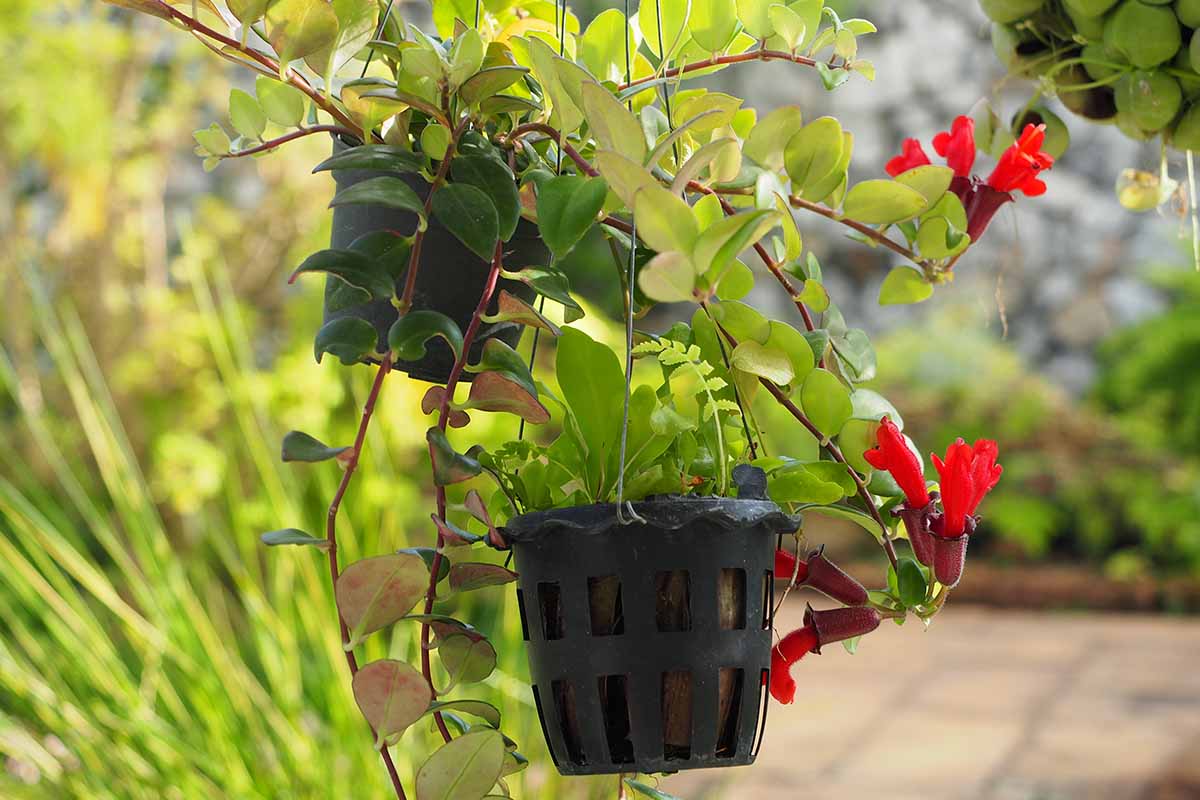
Make sure that to water from the underside or on the soil stage, by no means from overhead. Permit the surplus to empty totally after which discard it.
Pooled water on the backside of a planter or within the saucer under it could actually trigger root rot, which is deadly and to be averted in any respect prices.
Additionally, use tepid quite than chilly water, particularly when the plant is in bloom and additional inclined to shock from chilly soil.
Normally, you’ll most likely must water about as soon as per week, although it’s best to sometimes lengthen the interval between bouts of watering all through the dormant days of winter.
At that time, as soon as each two weeks needs to be ample, however check that soil moisture to make certain!
Fertilizer
Each couple of months, plan to provide your plant a lift by making use of a light, balanced houseplant fertilizer in keeping with the producer’s directions. It might be both liquid or granular.
Halt the fertilizer functions within the winter, although. Apply it simply as soon as in the direction of the top of the season, because the plant begins to return out of dormancy.
I’m a fan of Dr. Earth Pure Gold Pump and Develop all-purpose plant meals, obtainable from Gardener’s Provide Firm in a 16-ounce bottle.
Rising Ideas
- Develop in well-draining potting combine.
- Present shiny, oblique mild.
- Keep humidity ranges of between 30 and 50 p.c.
Pruning and Upkeep
There’s a little bit of upkeep concerned with lipstick vegetation, particularly in the event you’re aiming for full, lush progress and optimized flowering potential.
First, to forestall an infection by dangerous pathogens, it’s necessary to make use of sterile scissors or clippers to chop off and discard any yellow, brittle, or wilting leaves or stems.
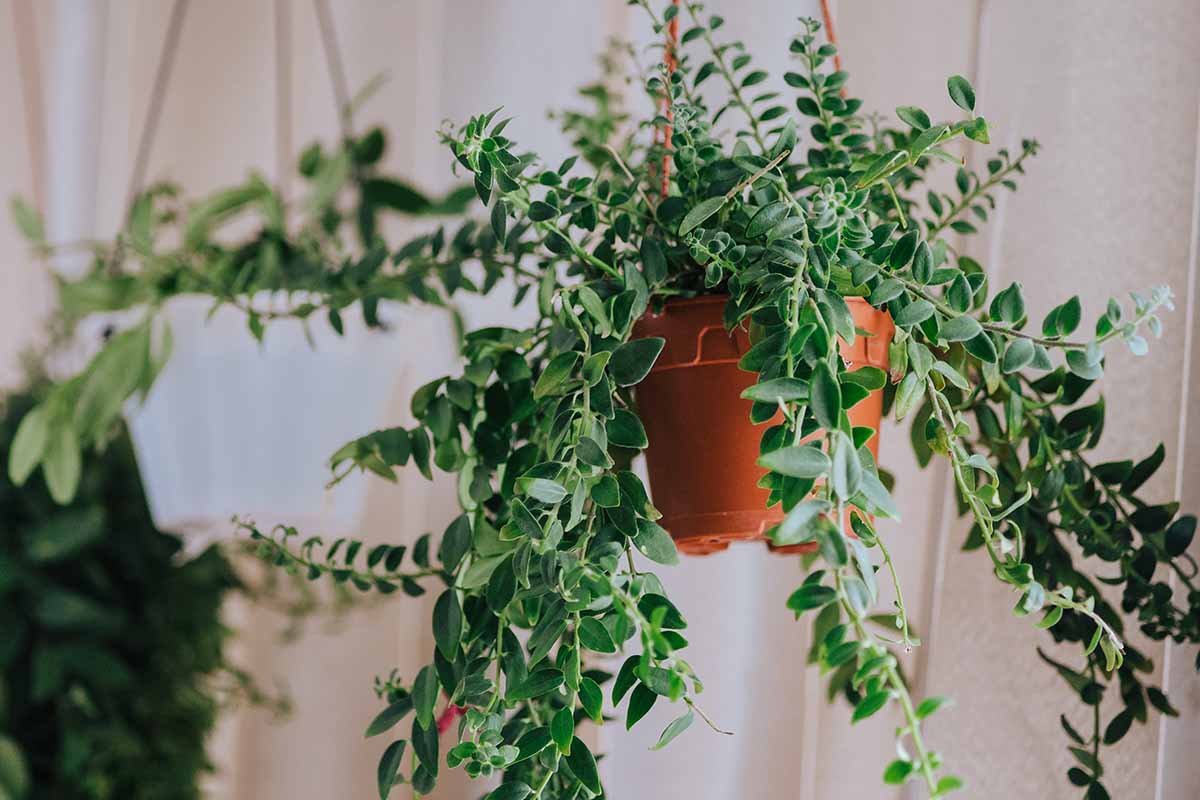
Resist the temptation to tug leaves off along with your arms as you stroll by, since you could uproot the entire vine or injury the stem within the course of.
For those who’re lucky sufficient to develop a thriving lipstick plant with a number of stems, go forward and prune the ends to encourage the plant to develop fuller. Do that after flowering or throughout the spring and summer season when the plant is actively rising.
Deadhead the spent blooms to take care of a tidy look.
Your lipstick plant will finally have to be transplanted into a bigger pot, however don’t rush this. These vegetation develop and flower greatest once they’re a bit potbound.
Solely repot into a brand new container that’s one dimension bigger. If it’s roomier than that, the surplus quantity of added potting combine is more likely to entice and maintain further water as a substitute of permitting it to empty.
All the time give the plant a drink of water the day forward of repotting. It will assist reduce transplant shock.
For those who place your plant open air throughout the summer season months, choose a location out of direct solar and ensure to deliver it again indoors when temperatures drop to 60°F.
Lipstick Vine Cultivars to Choose
You may be fortunate sufficient to attain among the extra uncommon varieties at a neighborhood nursery or from a fellow collector.
However the red-blooming A. radicans species is most available for informal gardeners to buy.
Normally the vegetation are simply listed as “lipstick vine.”
Yow will discover vegetation in four-inch black plastic hanging pots from Thorsen’s Greenhouse through Walmart.
A number of sorts to look out for embody:
Black Pagoda
A. longicaulis, aka Black Pagoda, options darkish inexperienced, mottled foliage with purple undersides. The flowers are orangey-red.
Yow will discover this stunner obtainable at Walmart in six-inch pots.
Cassiopeia
A. fulgens (syn. A. evrardii) ‘Cassiopeia’ sports activities sensible pink flowers (suppose Marilyn Monroe’s basic lipstick shade) bursting from darkish purple tubes.
Curly
A. radicans ‘Curly’ has vines and leaves that twist and switch. Flowers are shiny pink.
Mona Lisa
‘Mona Lisa’ (A. radicans) options orangey-red blooms and darkish inexperienced leaves.
Yow will discover ‘Mona Lisa’ obtainable in four-inch pots at Walmart.
One which I’m at present searching for (do let me know in the event you spot one on the market in East Tennessee!) is A. radicans ‘Variegata,’ which has inexperienced, twisted leaves which can be streaked with white. Its showy blooms are my favourite colour, red-orange.
Managing Pests and Illness
Grown as houseplants, lipstick vines don’t typically encounter points with pests or illness, however there are a couple of to observe for and stop the place doable:
Pests
Like different houseplants that desire humid circumstances and moist soil, lipstick vegetation are susceptible to aphids, mealybugs, scale, and spider mites.
Make sure that to take away any insect pests forward of bringing houseplants again indoors forward of cool climate.
For those who’ve noticed a number of of those houseplant assailants, you possibly can take a look at our guides to managing aphid, mealybug, scale, and spider mite infestations for recommendations on figuring out, stopping, and eradicating every kind of insect.
Illness
An excessive amount of or too little humidity, too little mild, and too-cold temperatures are probably the most threatening foes for lipstick vines.
There are a couple of ailments you will have to maintain an eye fixed out for:
Leaf Spot
Tiny brown marks on the leaves are the primary indication of leaf spot, which is brought on by a gaggle of fungi that exploit overly moist circumstances in heat climate.
In case your lipstick plant has hung out open air within the heat months, that could be the place it picked up the an infection.
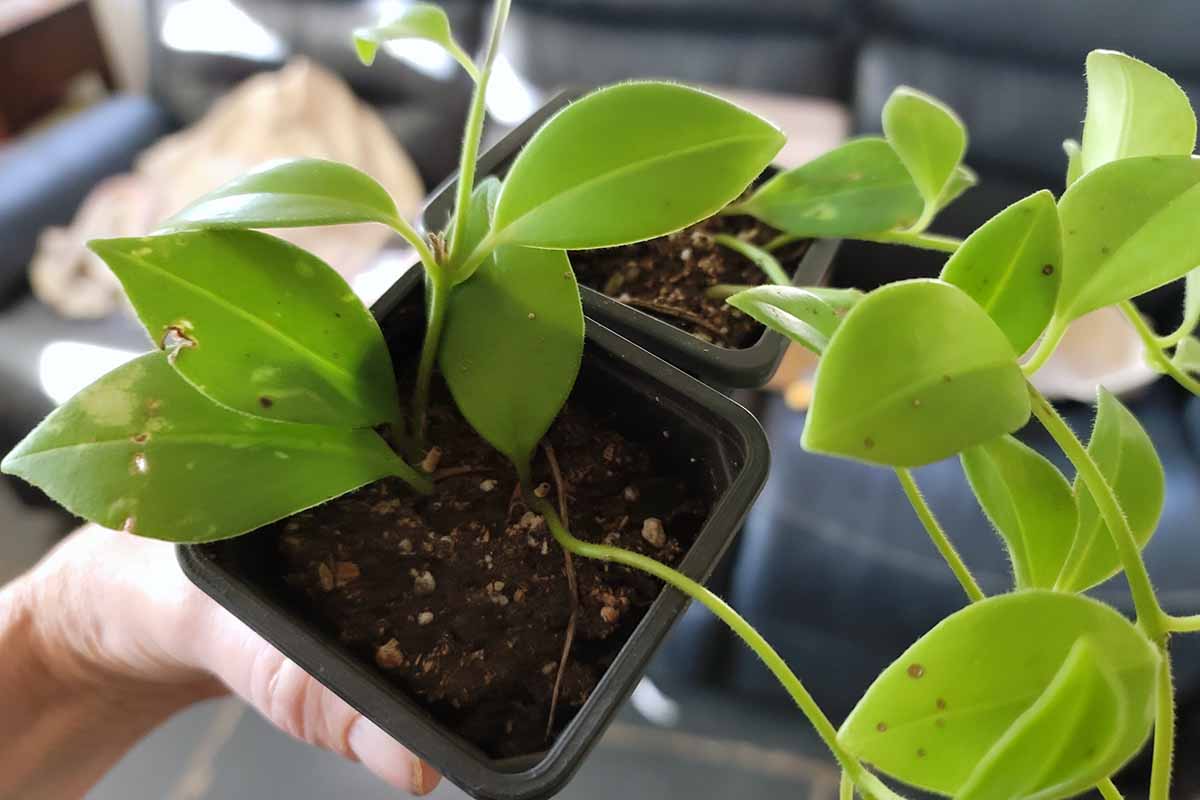
That’s what occurred to my lipstick plant, although fortunately solely a few leaves had been affected and it was straightforward to remove the issue.
Indoors, watch the best way you water to keep away from leaf spots. Ideally, it’s best to water on the soil floor, not from overhead.
For those who are inclined to splash water about whilst you full your watering chores, think about watering lipstick vegetation from the underside.
For those who discover you typically get a little bit of water on the leaves, it’s a good suggestion to solely water early within the day, which supplies the leaves ample time to dry.
You may deal with leaf spot with neem oil, following the producer’s directions. Monterey 70 p.c Neem Oil is the one I exploit.
You may discover it from Arbico Organics in containers of varied sizes, a few of them cost-saving concentrates that may have to be diluted prior to make use of.
Powdery Mildew
A sometimes manageable illness that may afflict lipstick vegetation, powdery mildew appears to be like like a dusting of confectioners’ sugar on the leaves or stems.
You may normally maintain a light case by wiping the leaves clear with a humid cotton ball or making use of neem oil.
To study extra about stopping, figuring out, and eliminating this situation, seek the advice of our information.
Root Rot
Soil that’s waterlogged creates supreme circumstances for root rot.
In case your plant is languishing otherwise you odor one thing rotten within the neighborhood, verify for slimy brown roots.
Sadly, in case your lipstick vine has root rot, you’ll must swiftly and decisively take away and destroy it, and toss the combo it’s rising in on the identical time.
You should definitely sanitize the container in the event you plan to reuse it.
Finest Makes use of of Lipstick Vines
For those who love the look of flowering vegetation in hanging baskets on a patio or in a gazebo and also you want to create the identical impact indoors, lipstick vines can ship.
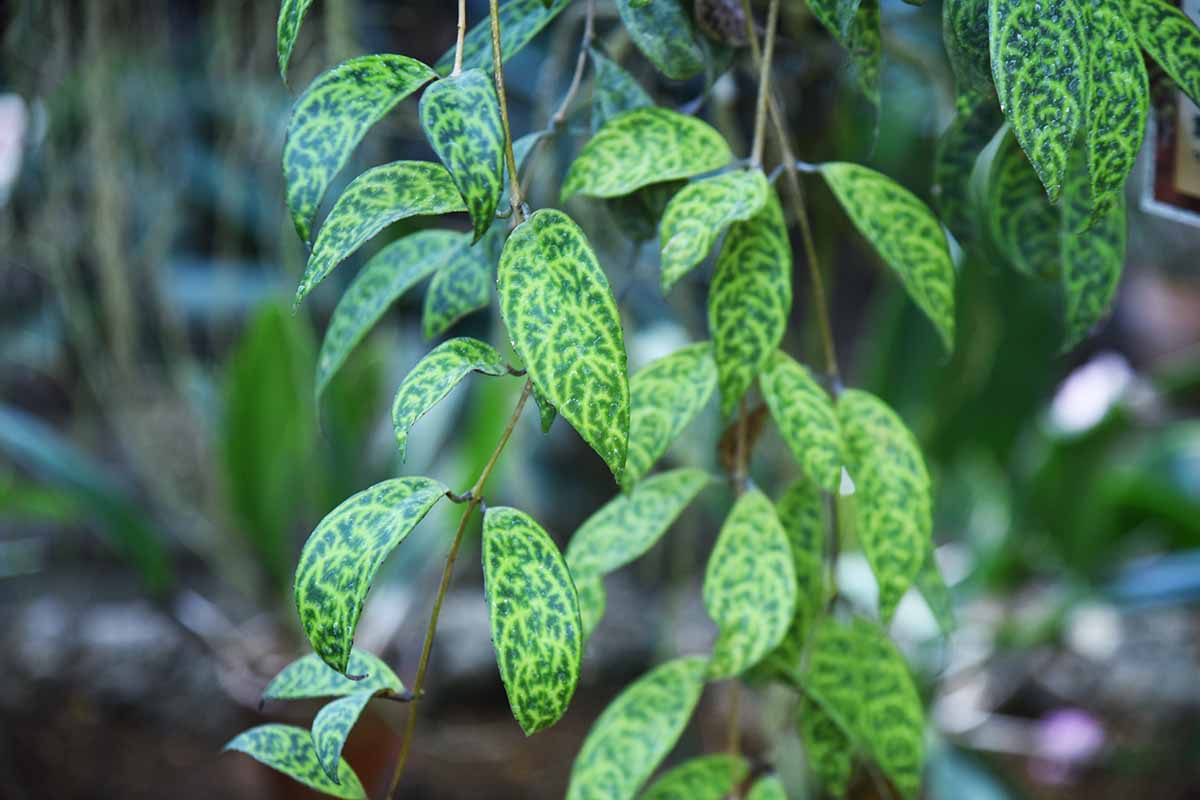
After all, they do require satisfactory humidity, oblique shiny mild, and steady indoor temperatures.
However anyplace that you may present these circumstances, you possibly can benefit from the shiny, shiny leaves and colourful, quirky blooms which can be positive to carry one’s temper.
Strive hanging a solo lipstick plant beneath a skylight on the upstairs touchdown or in a sunroom in a spot that receives oblique daylight.
Or set it on high of a shelf a couple of toes from a window in a brightly lit rest room or the kitchen.
Additionally, you would experiment with rising a number of in a set of flat-backed containers hanging on a wall, with the vines draping down the partitions and accenting the room with vibrant colour once they bloom.
Fast Reference Rising Information
| Plant Kind: | Flowering vine | Flower/Foliage Coloration: | Orange-red, orange-yellow, pink, purple, yellow; inexperienced, variegated |
| Native to: | Asia | Upkeep: | Average |
| Hardiness (USDA Zones): | 10-11 | Soil Kind: | Soilless African violet potting combine |
| Publicity: | Vivid, oblique mild | Soil pH: | 5.5-6.5 |
| Time to Maturity: | 3-6 years | Soil Drainage: | Effectively-draining |
| Planting Depth: | Crown even with soil floor | Makes use of: | Hanging basket, houseplant, panorama (Zones 10-12) |
| Size: | Vines as much as 3 toes | Order: | Lamiales |
| Development Price: | Quick | Household: | Gesneriaceae |
| Water Wants: | Average | Genus: | Aeschynanthus |
| Widespread Pests and Illnesses: | Aphids, mealybugs, scale, spider mites, thrips; Leaf spot, powdery mildew, root rot | Species: | Fulgens, longicaulis, radicans |
A Kiss of Houseplant Coloration
Rising vegetation prized for his or her flowers indoors does have a tendency so as to add a level of issue to the houseplant cultivation course of.
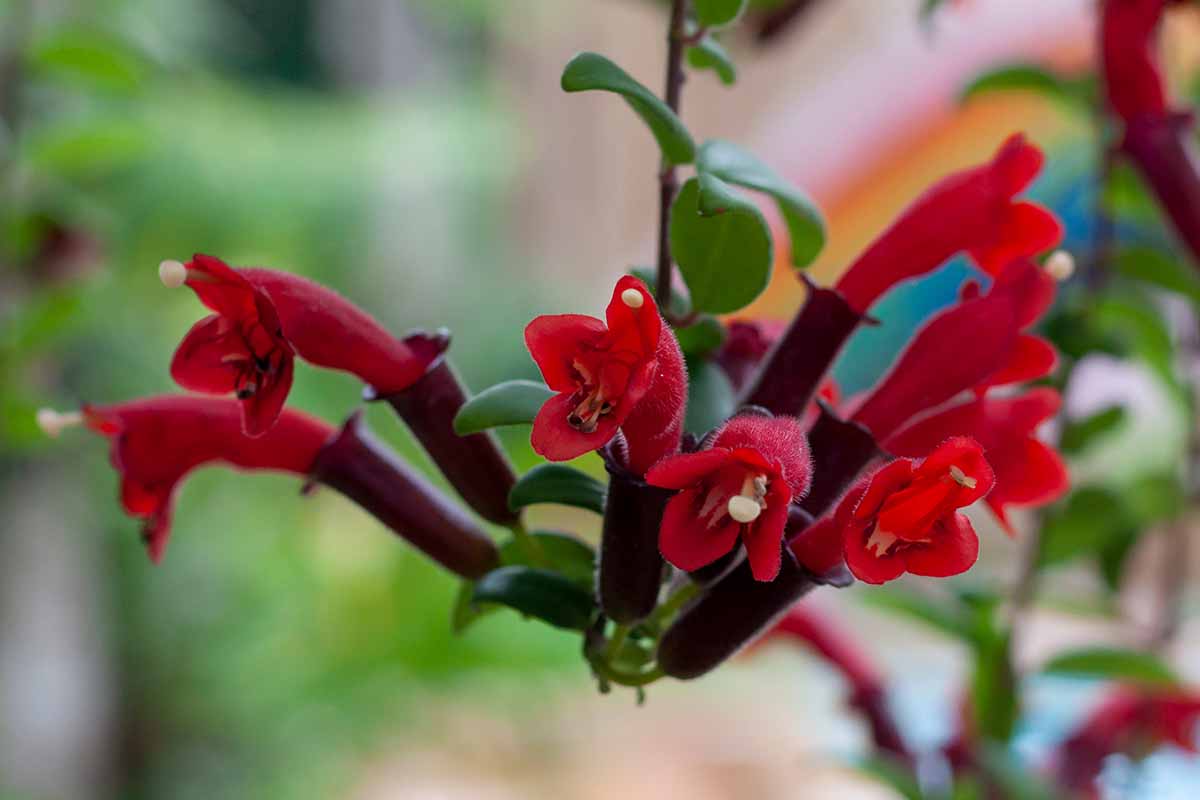
However in my ebook, the quirky tubular bloom form and chic trailing vines of those vegetation offset any further effort required to look after them correctly.
Do you could have expertise with this stunning, uncommon indoor plant? In that case, we’d love to listen to from you within the feedback under, and we’re right here to subject your lipstick plant questions!
For those who’re searching for extra steering on deciding on and caring for different indoor vegetation recognized for his or her blooms, make sure to learn these guides subsequent:


